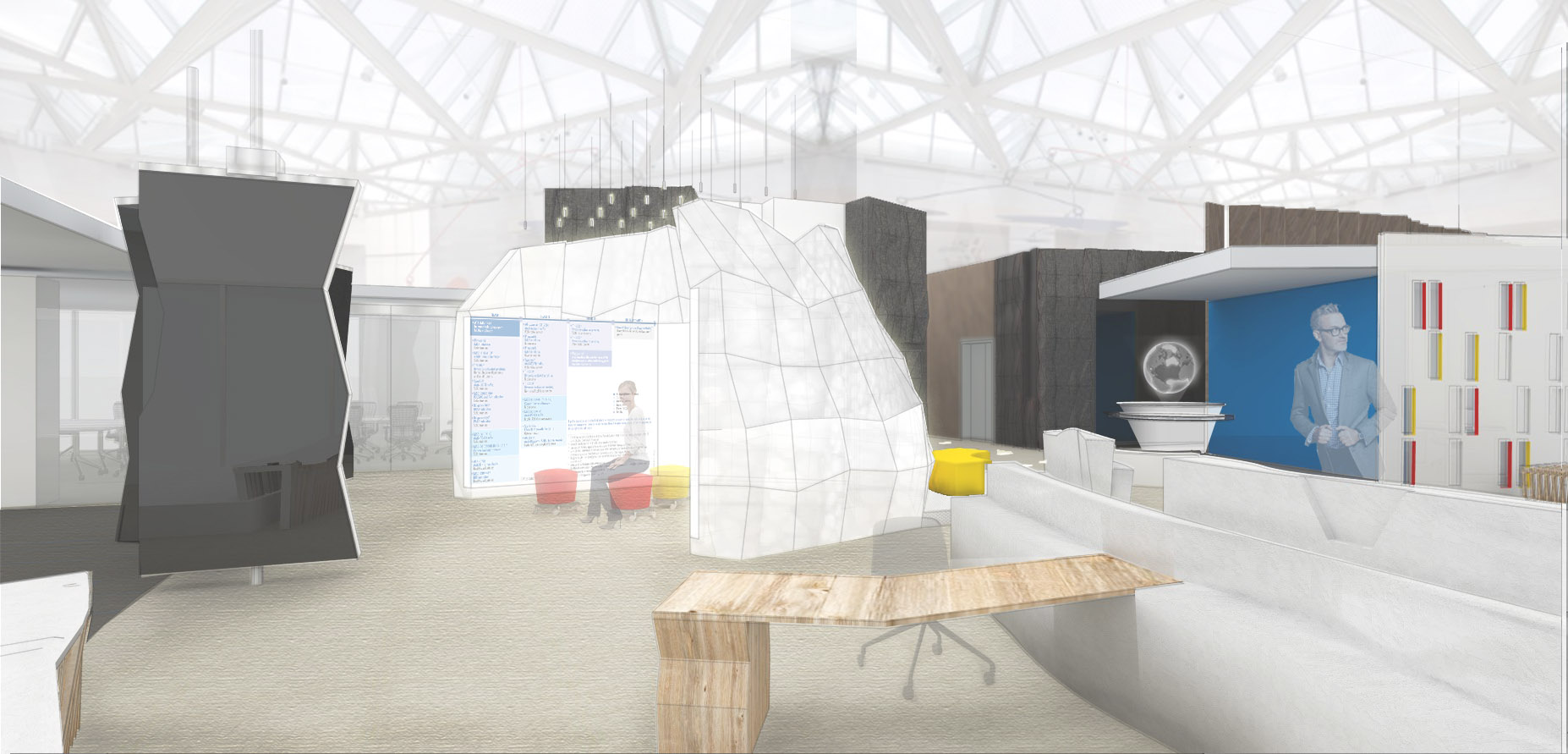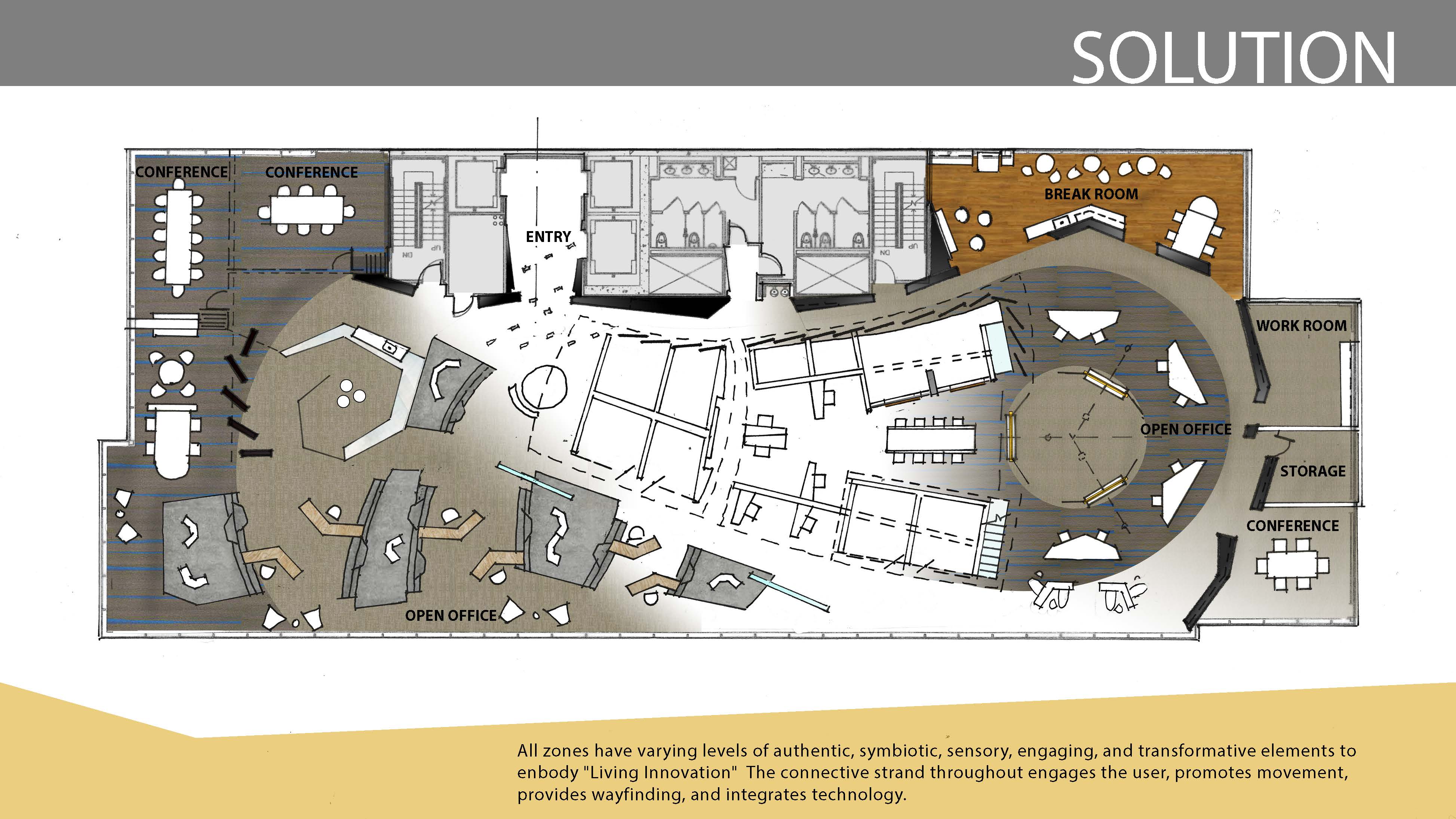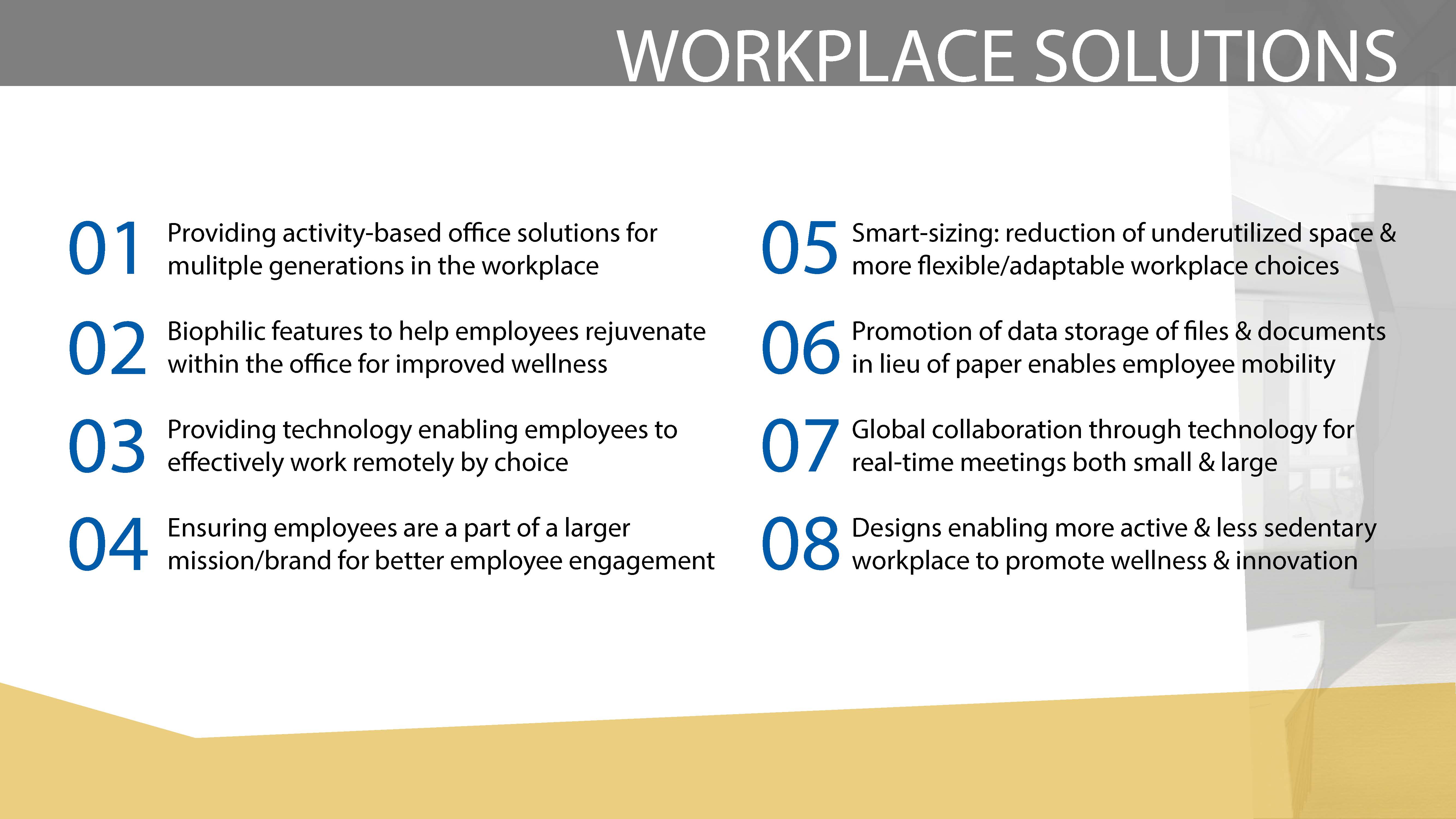New Design Solutions for the Working Human
By Enzo Marfella, Susan Pelczynski, Jill Switzer, Zaw Latt & Meredith Goldberg
Our environments affect everything from our sense of security to our ability to connect with other people. So when The INTEC Group was asked to help a client envision the Office of the Future, our research process became an exploration into the human condition. As we described in Part One, we are often more alike than different, from our need for sensory engagement with natural materials to our need to understand how we fit into the bigger picture.
To address these commonalities in the work environment, our goal was to create design solutions that would be universally appealing, and yet completely adaptable to help companies respond to an array of trends, technologies and economic drivers the future could bring. Here’s what we recommended.
Biophilic Design
Biophilic design applies the inherent human inclination to affiliate with natural systems and processes to the built environment. Through enhanced sensory experiences, biophilic design elements can improve worker performance, lower stress levels, provide greater motivation, improve cognitive function, and create a superior quality of life within communities.
By enhancing the interaction of color, sunlight, natural materials, views and vistas and airflow, we can change the people’s perceived level of curiosity, security, creativity and cognitive ability.
Cross-Generational Appeal
With five generational cohorts now working together, we need to design for their similarities as well as for their differences. Universally, they want security, growth, commitment, fairness, and leadership. But they have different preferences when it comes to privacy, interaction and sensory input.
With moving walls that redefine spaces in real time, Kinetic architecture is the key design element that addresses generational commonalities and differences. By incorporating motion into architecture, designers give users another dimension of interaction with their environment, providing transition, inspiration and surprise. Kinetic architecture invites the individual to be an integral part of the transformation of the space and further engage with the environment.
Purpose-Driven Displays
With employee engagement on decline, design solutions and space emphasizing the purpose of the organization and how each individual supports a bigger goal are critical for positive growth.
It’s vital that the workspace tell the story of the mission and brand. If everyone understands why they come in every day, their internal fire and commitment are constantly revitalized.
Engagement Through Technology
In addition to allowing the knowledge workers of the future the flexibility they desire in where and when they work, technology can be used to interactively reinforce the company’s mission.
Rather than displaying static images, interactive OLED screens could welcome visitors and announce current advances for the organization. Success and progress can be conveyed real-time. Some of the elements we’re incorporating include smart glass, proximity-sensing technology, automatic teleconferencing, deadzone-free wireless networks, telepresence robots, biometrics, 3D printing and wearable technology.
Designing for the Whole Person
It’s not just the mind we’re engaging anymore, it’s the senses, too. A workplace that supports the whole person is a healthy workplace.
Sit/stand stations and walk stations enhance cardiovascular health and shorten meetings. Wellness or meditation rooms where people can go to read, rejuvenate, reflect, and decompress provide an extra level of care for employees. Protected rooms with integrated harmonious sounds from nature could be selected to create a virtual forest or perhaps an ocean atmosphere with even smells of peat moss or salt air as a further enhancement toward an experiential space.
The Office of the Future is authentic, symbiotic, sensory, engaging, and transformative. It is the physical manifestation of “Living Innovation.
The workplace that delivers on this promise will foster employee engagement, attract and retain the best and brightest talent, and have healthier, happier employees who outperform their competition.


